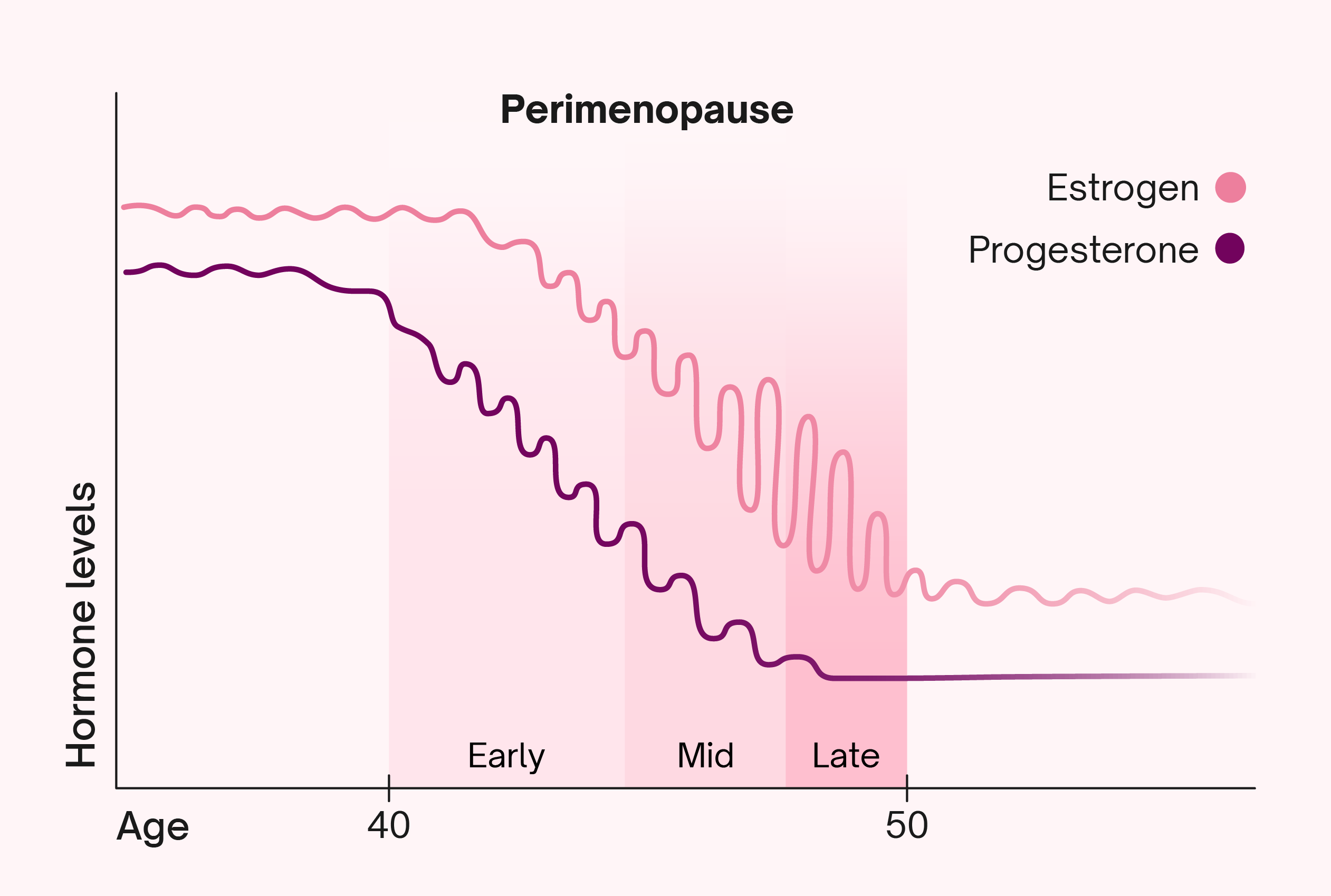Hormones in transition: My early perimenopause journey
When I first started working on Natural Cycles over a decade ago, I was deep in my own reproductive health journey and seeking a hormone-free way to prevent pregnancy. Now, at 41, I find myself at a very different stage of that journey: early perimenopause.
I’ll admit, even as a physicist and the creator of a scientifically backed app that helps women understand their cycles, this new chapter has been humbling. For some time, I’d noticed subtle changes, such as spotting between periods, shorter cycles, heart palpitations, and, underneath it all, a growing sense that my hormones weren’t quite following their usual rhythm. Still, I didn’t immediately connect these changes to perimenopause.
It wasn’t until I went through the NC° Perimenopause Stage Assessment within the NC° app that I recognized what was really happening. Seeing my own data reflected back, including the temperature patterns and the cycle changes, gave me clarity that these shifts weren’t random, but part of a new hormonal phase.
Perimenopause is one of the most significant transitions a woman experiences, yet it remains one of the least understood. By sharing both the science and my personal experience, I hope to help more women recognize what’s happening in their own bodies — and feel informed, supported, and empowered throughout this stage.
Understanding hormones in transition
Perimenopause isn’t a single moment in time. It’s a gradual transition, where estrogen and progesterone shift in complex and often unpredictable ways. These changes can start years before menopause and may vary greatly from person to person.

Here’s how the hormonal landscape typically evolves:
Early Perimenopause:
I am in this beginning phase of the journey. During early perimenopause, progesterone is the first hormone to decline. This can lead to changes such as spotting (irregular bleeding) and shorter cycles (both the luteal phase can shorten, and ovulation might start happening earlier in the cycle). Early perimenopause can sometimes be referred to as the estrogen-dominant phase, characterized by heavier menstrual bleeding, bloating, moodiness, and breast tenderness. Anxiety and brain fog are also symptoms that declining progesterone levels can cause. PMS can become more intense or prolonged.
Mid Perimenopause:
The next phase in my journey is mid perimenopause, during this time, estrogen levels will also have declined significantly. This doesn’t always look like a straight downward line, but more like an increasingly erratic squiggle. Estrogen may surge or dip unexpectedly, contributing to irregular cycles, anovulatory cycles (where ovulation doesn’t occur), and other symptoms, such as hot flashes, sleep disturbances, or mood changes.
Late Perimenopause:
In this final stage of perimenopause, progesterone levels approach zero, and estrogen stabilizes at a generally lower level (but we may still have occasional spikes until menopause is reached). As we’ve entered the estrogen-deficient stage, ovulation becomes rare, and cycles are longer and highly irregular. Periods become lighter but can also occasionally be very heavy. Everyone’s journey looks different, but symptoms range from cognitive (e.g., low moods, fatigue) to physical (e.g., night sweats, vaginal dryness).
Menopause:
Once you’ve gone 12 straight months without a period, you’ve officially reached menopause, the natural end of your reproductive cycle. Symptoms associated with PMS often disappear as cycles stop and progesterone is at trace levels. After menopause, estrogen remains low and stable, but the brain’s thermoregulation center (in the hypothalamus) takes time to recalibrate. Before it fully adapts to lower estrogen, even small body temperature changes can trigger a hot flash response. Over time, this system becomes less reactive as the body adjusts to a new hormonal baseline.
These hormonal fluctuations are normal, but understanding where you are in this journey can make an enormous difference — both in managing symptoms and in feeling more in control. It can also help you know what to expect from the future and be more prepared for the phases ahead.
How NC° Perimenopause helps decode these changes
The Natural Cycles app’s newest mode, NC° Perimenopause, is designed to bring clarity to this complex stage of life. It’s powered by an algorithm that actively helps identify where you are in your perimenopause journey by analyzing cycle patterns alongside biometric data, such as body temperature—a useful indicator of hormonal activity.
By combining these data points, NC° Perimenopause provides personalized insights into:
- The stage of perimenopause you are likely to be in
- How your hormones are changing over time
- How those changes may relate to the symptoms you’re experiencing
For me, being able to visualize these shifts has been both scientifically fascinating and personally reassuring. It transforms what might otherwise feel like unpredictable changes into a clear and understandable picture of what my body is doing and why.
Moving through perimenopause with confidence
Perimenopause is not a disorder or an endpoint. It’s a natural transition that deserves greater attention, understanding, and support. By bringing science to this stage of life, we can help more women navigate perimenopause with confidence, not confusion.
My experience has reminded me that the same principles that guided the creation of Natural Cycles — evidence, transparency, and empowerment — are just as relevant here. NC° Perimenopause offers that same sense of clarity, turning hormonal uncertainty into knowledge, and knowledge into power.
NC° Perimenopause is here to support you with wellness insights and information. It’s not a diagnosis — we always recommend consulting with your own doctor for medical advice.
Did you enjoy reading this article?
